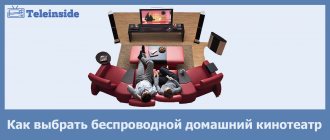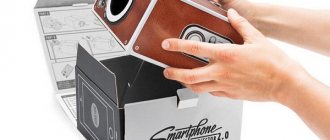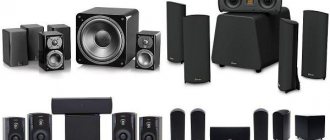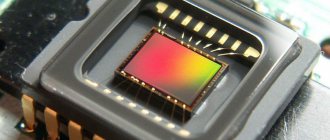Distance and pressure
So, according to the standards, we should get a sound pressure of 85 dB (105 at peak) without distortion across the entire frequency band. Sound pressure at a distance of 1 meter from the speaker when 1 Watt of power is applied to the speaker is “sensitivity”; it is almost always indicated in the product data sheet. Next, we calculate the maximum sound pressure at the listening point - each doubling of power will give us +3 dB of sound pressure, and each doubling of the distance will give us a decrease of -6 dB.
Recording the soundtrack for the animated film “How to Train Your Dragon 2” at Abbey Road Studios in London
Let's take, for example, the most common acoustics for music with a typical sensitivity of 91 dB. At a distance of 4 meters, due to a roll-off of –12 dB, it is necessary to compensate for the losses with an additional gain of 105–(91–12) = 26 dB. This is roughly equivalent to a 500W amplifier. Not all speakers are ready to withstand such power.
However, that's not all, the main problem is that in speaker specifications, power parameters are indicated based on a signal with a frequency of 1000 Hz and, much less often, in pink noise. Therefore, when choosing speakers, it is better to have a maximum pressure margin of 3–6 dB.
There are a couple of ways to increase sound pressure. You can place the speaker in the plane of the wall, then we will get an additional 5–6 dB at frequencies below ~300 Hz. Or use active multiamping, when passive crossover filters are excluded from the system and active electronic (usually digital) crossovers for power amplifiers are used instead. In this case, bandpass amplifiers are connected directly each to their own speaker, which helps to obtain greater sound pressure and better quality.
What acoustics for cinema should I buy?
Unlike musical acoustics, where listeners may like some coloration of the sound, this approach is unacceptable in cinema systems. Cinema requires minimal distortion from speakers, no aftertaste and high sound pressure. Therefore, in a recreation center you should not use tube amplification and audiophile acoustics with a “special” sound. In a cinema, it is necessary to ensure a minimum number of room reflections, so speakers with a narrow diagram and those where the directivity properties depend little on frequency are best suited for it. As many people know, horn-type speakers have similar characteristics, and with a so-called horn. "constant focus".
Recording of the soundtrack for the film "Star Wars: The Force Awakens" at MGM Studios, California
I can say that the most successful is an elliptical horn with a directivity of 60x90 degrees. Next, you can consider ordinary speakers with dome and conical diffusers, but it is better to avoid different types of “panel” acoustics (electrostats, tape, AMT and others), even if they are used only in the high-frequency section - they have very uneven directivity and problems with overload ability at low frequencies. Dipoles and omnidirectional types of speakers are not suitable for cinemas, with the exception of special wall-mounted models (the so-called “surrounds”).
Of the design types, I will put a low-efficiency bass reflex (port area less than ~15% of the woofer diffuser area) in first place, and a closed box in second place. Types such as “labyrinths”, TDL, reverse horns, etc., where the rear radiation is almost completely output outside with a delay, are not suitable for DC, as are open design options.
Placing acoustics in the room
Naturally, in film sound there are standards for the placement of speakers - in particular, the angle relative to the listener’s position is indicated, and, if possible, these standards must be adhered to in order to get the sound “as the director intended.”
The picture above shows a diagram of the arrangement of speakers in one of the most common 7.1 formats: three front channels, two side, two rear and a subwoofer (its location is not standardized, since it is believed that human hearing is not able to determine the position of the source at such a low sound frequency). If you build a DC in the most common frame format of 2.40:1 with a recommended viewing angle of 35-55 degrees, then, as can be seen in the image, the front channels can be either in the screen format, or the central channel behind the screen, and the side channels at the edges of the canvas. And this will be the best option. First of all, because the side channels should be moved apart to the maximum value in the standard ±30 degrees. Then you will get a uniform panorama between the front and side speakers, and the central channel will be in front of the screen, which will avoid losses in the sound-transparent fabric (high frequencies are absorbed by 1-6 dB for a fabric version, and up to 12 dB for a perforated one).
Let me make a note about the location of the central channel. Placing it under the screen on the floor, as you often see, is a very bad mistake. This way we will get a strong re-reflection of sound from the floor, which will reduce the intelligibility of dialogues and give an easily determined direction to the sound source, which absolutely does not coincide with what is happening on the screen. For this reason, the “legal” position of the center channel is that the emitter should be at a height of 5/8 from the bottom of the screen. The front LR channels and surround (for 5.1 and 7.1 formats) are located at the same height.
Recording of the soundtrack for the film "Life of Pi" at The Newman Scoring Stage, Los Angeles
I would like to note that new 3D audio formats, like Dolby Atmos, DTS:X, Aura 3D - they all have different maps of the standard speaker layout. And then what to do if you are building the “best” recreation center? A solution can be offered by sound processors, such as the Trinnov Altitude 32 with its 3D Remapping function, which virtually “rearranges” the speakers into their places in full accordance with the reproduced standard. Today, this is the only device that promises such virtual “permutations” on one set of speakers.
How to choose a 5 in 1 home theater?
When going to a digital equipment store to buy a home theater, first of all, you should remember that these products are a whole set of devices designed exclusively for working with multimedia content. Its functionality is aimed at creating multi-channel large-scale sound, which will multiply the positive impressions received from watching a movie or listening to music. Sounds located on the periphery become available for audibility, which an ordinary TV speaker system is not able to convey.
All elements are placed in the room in such a way that the viewer is located in their center. This gives rise to the feeling of surround sound. In this case, an important role is played by the subwoofer and rear speakers, which are capable of working with a low frequency range. When watching a film using such products, the viewer gets the impression that he is in a real cinema.
A home theater includes the following elements - a player that works with various multimedia files, an acoustics system and an AV receiver. Be sure to consider each of the components of the cinema separately. In particular, the player must work with files located on various media - DVD, BLU-RAY, CD, USB - flash drives and external hard drives. Before purchasing, it would also be a good idea to ask what formats the product reproduces - the wider this list, the better. Almost all modern products are equipped with a built-in radio receiver. It is quite natural that the player comes with a remote control to switch between content sources and configure the player as desired.
The receiver is used as an audio signal processing system. With its help, the digital signal coming from the source is converted into analog. Frequency distribution along acoustic channels is also carried out here. In addition, it functions as a signal amplifier. After completing all these operations, it transmits sound to the channels that make up the acoustics complex - central, rear, front and subwoofer. When choosing this device, you should definitely pay attention to the power of the product: for a room of about 20 square meters. m, a receiver with a power of about 100 W will be enough, but if the area is 30 sq. m or more, then preference should be given to products of about 200 W.
5.1 acoustics means that the sound is divided into 5 channels - two front, two front, one center plus one subwoofer. They should be placed in strict accordance with the diagram included in the manufacturer’s instructions: in this case, it will be possible to achieve optimal sound that will reveal all the capabilities of the speaker system.
We considered all of these factors when selecting products to include in our ranking of the best 5.1 home theaters. However, we did not limit ourselves only to operational parameters, but also paid attention to the ratio of price and quality of products, and also took into account user reviews. Now is the time to start analyzing specific models.
Acoustic placement errors
So, I will touch on the main mistakes when placing speakers and possible methods for correcting them.
1. It is not possible to use a sound-transparent screen. In such cases, you can place the center channel speaker above the screen. Another option is to enable the virtual center channel feature that some projectors have. This might work even better than putting it on top of the canvas.
2. Placement of side channels too close to the viewer (elongated room). In this case, when several spectators sit in the same row, it will become impossible to ensure a balance of sound from the side channels for all spectators except the central one. The only way to solve this problem is to raise the side channels higher, thus averaging the distance to the viewers.
Recording of the soundtrack for the film “Mission: Impossible: Ghost Protocol” at The Newman Scoring Stage, Los Angeles
3. Spectator seats are placed close to the wall. In general, it is better to avoid such an arrangement of seats right away; it is fundamentally wrong. But if there is no other option, the only way to improve something is to use a dipole type of speaker on the rear wall above the audience.
4. The use of inexpensive low-power ceiling speakers. Often they are placed a little away from the viewer, and if you add the height of the ceiling, then the final distance from the speakers to the viewer will exceed the same threshold 4 meters that I wrote about at the beginning of the article. The processor can partially correct this situation, but it cannot be completely “cure”; this is a compromise solution.
5. All speakers must be directed to the center of the spectator area, or rather to the VIP seat. This rule is often neglected and speakers are placed parallel to the walls of the room. The result is increased unevenness and strong reflections from the walls of the room.
6. Excessive expansion of the viewing area. Remember, accurate channel-by-channel delays can only be made for one point (seat) in the hall, so the audience needs to be “seated” as compactly as possible.
7. I also consider placing the speakers in 5.1 format, when it is possible to install 7.1, a mistake. In 5.1 format, there is always a noticeable gap in the front-side panorama, and the use of two additional speakers and a pair of amplification channels does not significantly increase the cost of the estimate.
8. Using one subwoofer. With one low-frequency driver in the system, it is almost impossible to obtain uniform sound pressure throughout the entire viewing area. For illustration, below is a graph for measuring one system in a room of 60 sq.m. in an area of approximately 3x2 meters. Please note that low frequency flatness can reach up to 30 dB depending on the measurement location.
Two rows, a pair of seats in the first row and three seats in the second are marked in the center of the 50 sq.m. hall. in a position approximately 3/4 along the length of the hall. It is clearly visible that the unevenness at some frequencies reaches more than 30 dB
For these reasons, high-end home theaters have more than one subwoofer. The optimal number is 4, and the minimum is 2. In this case, a pair of subwoofers are placed in the centers of opposite walls, and if you take four low-frequency drivers, then there will be more ways (Harman research).
With this placement of subs, uniform low-frequency coverage of the entire viewing area is achieved, but it is necessary to use parametric equalizers to level out several peaks of sound pressure. First, for each of the subs, a delay is set in the settings, which compensates for the difference in the distances of the low-frequency speakers to the center of the viewing area, and then its response is equalized using an equalizer, and then a filter is also applied in the common LF channel. This is a very difficult task, but there is no simpler way. Multichannel audio processors are designed to make it somewhat easier, but remember that you need to choose a model with a sufficient number of channels, because each subwoofer will take one for itself. Although you can reduce the number of channels with a slight loss of quality if you output one channel to a pair of subwoofers.
How to choose a set of acoustics
Before you buy a set of speakers for your home theater, you need to choose the right system that's right for you. It is better to give preference to already proven brands that have proven themselves in terms of quality and reliability. These include: Dali, Harman Kardon, JBL, Yamaha. If you need acoustics in the budget segment, then you can consider options like HARMAN KARDON HKTS 35. In this case, the set consists of 5 speakers and an active subwoofer. If the system is supposed to be of a higher class Hi-Fi or Hi-End, then the best option would be to buy all the speakers separately, plus a receiver. In the latter case, it is important to take into account the fact that all components must be of approximately the same class, otherwise there is a high risk of getting incorrect sound with a noticeable imbalance in sound quality.
Gain and cables
For home theater, high-power Class AB "current" amplification is always preferable. However, for large projects it is better to take switching amplifiers, since they have significantly less heat dissipation in idle mode - about 5-8%, which is less than a kilowatt in a DC circuit with a total power consumption of 5-10 kW. In turn, analog amplification in idle mode will consume about 3 kW. In addition, good analog amplifiers with a power of more than 300 W per channel are very expensive, and there are very few on the market capable of delivering 500 - 1000 W - there is nothing to choose from. While the sound quality of modern pulse amplifiers is no longer inferior to the best examples of analog amplification.
Recording of the soundtrack for the film "Die Hard 5: A Good Day to Die" at The Newman Scoring Stage, Los Angeles
In addition to the ordinary problems of speaker cables with insufficient cross-section and current limitation, there is one more that home theater builders should be reminded of - the skin effect. This "effect" causes a delay in the low-frequency component of the signal and is well known in stereo systems. There, flat cables, coaxial structures, a set of thin insulated conductors (Litz wire), etc. are used to combat. But in the case of cinema, this problem is easier to solve. As a rule, DC uses a frequency division of 80 Hz (subwoofers operate below), so the consequences of the skin effect are easily corrected by delays in the main channels relative to the low-frequency effects channel.
Part 1: Building a home theater: acoustic treatment of the room (part 1)
Acoustic kits for home theaters
Catalog
- Sound equipment
- Acoustic systems Active acoustic systems
- Active subwoofers
- Passive loudspeakers
- Passive subwoofers
- Portable Speaker Systems
- Speaker kits
- Linear arrays
- Accessories and components for speaker systems
- Effects processors
- 2 channel amplifiers
- Professional and studio headphones
- Conference modules
- Digital processors
- DJ controllers
- Radio systems Radio system kits
- Keyboards Digital Pianos
- Electronic drum kits
- Electric guitars
- Combo amplifiers for electric guitars
- Guitar effects processors
- Ready-made solutions Home theater kits
- Acoustic kits for home theaters
- AV receivers
- Vinyl players
- Integrated stereo amplifiers
- Speaker cables
- Karaoke systems
- Installation acoustics Built-in acoustics
- Studio monitors
- Rotating heads Rotating heads BEAM
- Projectors Lamp projectors
- Mechanical screens
- Furniture and Hi-Fi stands for the home TV and equipment stands
- Mobile racks
- Video cameras
- Rain covers for video cameras
- Halogen with Fresnel lens
- Cable and Connectors Cutting Tool
- Ethernet, data, HDMI and DVB-ASI transmission
- Processors and fuel assemblies
- Controllers
- Galvanic isolation blocks
- DVI, HDMI, IR, RS-232
- Portable monitors
- Base stations
- Batteries
Manufacturers
- A.J.A.
- AKG
- AKMA
- ALTO
- AST
- ASTELL&KERN
- AUDIO PRO
- Acoustic Arts
- Acer
- Acoustic Energy
- Akai
- Alesis
- Allen&Heath
- Ampeg
- Analog Renaissance
- Antall
- Apart
- Apogee
- Arcam
- Artone
- Artsound
- Atlas
- Atomos
- Audac
- Audeze
- Audio Physics
- Audio-Technica
- Audioquest
- Aurender
- B&W
- BDI
- Barcelona
- Barco
- Becker
- Behringer
- Belden
- Bello
- Benq
- Beyerdynamic
- BirdDog
- Blackmagic Design
- Bluesound
- Boss
- CHAUVET-DJ
- CHAUVET-PRO
- CROWN
- CVGaudio
- Cabasse
- Cambo
- Campfire Audio
- Canare
- Canon
- Canton
- Casio
- Cayin
- Chief
- Christie
- Classic Solution
- Clearaudio
- Cloud
- Coman
- Cordial
- Cowon
- DAXX
- DBX
- DPA
- DUNU
- Dali
- Datavideo
- Ddrum
- Dean Guitars
- Dedolight
- Denon
- Digis
- Digitech
- Draka
- Draper
- DreamWave
- Dune
- Dynacord
- Dynaudio
- Dynavox
- Earthec
- Eden
- Elation
- Electriclight
- Electro Voice
- Emotiva
- Epiphone
- Episode
- Epson
- Evolution
- Exposure
- F&V Light
- FBT
- FIX
- Fender
- Ferrum
- Fiio
- Final Audio
- Fishman
- Flight
- Focal
- Focusrite
- Fostex
- GEWA
- Genelec
- Gibson
- Greg Bennett
- HK Audio
- Harman Kardon
- Heco
- Hollyland
- INVOLIGHT
- INVOTONE
- IQboard
- Ibanez
- In-Akustik
- Infocus
- Isol-8
- JBL
- JVC
- Jackson
- Jamo
- KBSound
- Kawai
- Kef
- KinoFlo
- Klipsch
- Klotz
- Konig&Meyer
- Korg
- Koss
- Kramer
- Kurzweil
- LEAK
- Laon
- Lenspen
- Lexicon
- Lg
- Libec
- Line 6
- Little Lab
- Logocam
- Logovision
- Lumien
- M&K Sound
- M.D.
- MJ Acoustics
- MT-Power
- Mackie
- MadBoy
- Magnat
- Manfrotto
- Manuel Rodriguez
- Marantz
- Mark Levinson
- Marshall
- Martin Logan
- McGee
- McIntosh
- Mesa Boogie
- Meze
- Monitor Audio
- Munari
- Music Man
- Musical Fidelity
- Nad
- Naim Audio
- Nec
- Neumann
- Neutrik
- Nordost
- Norstone
- Novation
- ORIS
- Onkron
- Onkyo
- Optoma
- Orange
- Ortofon
- PIONEER
- PS audio
- Panasonic
- Parasound
- Pearl
- Peavey
- Peerless
- Phonak
- Piega
- Polk Audio
- PowerGrip
- Presonus
- PrimaLuna
- Primare
- Pro-Ject
- Proficient
- Promethean
- Quad
- RCF
- REL
- RGBLink
- R.M.E.
- Radial
- Rega
- Ricoh
- Rockdale
- Rode
- Roksan
- Roland
- Rotel
- Ruark Audio
- RusRay
- SANKEN
- SIMGOT
- SMS
- SMSL
- SOUND CAPS
- SPL
- SVS
- SZ-Audio
- Sachtler
- Sakura
- SanDisk
- Sennheiser
- Shure
- Sigma
- Silent Wire
- Sim2
- Smart
- Solidsteel
- Sonance
- Sonorous
- Sonos
- Sonus Faber
- Sony
- Soundcast
- Soundcraft
- Soyuz
- Supra
- T+A
- TAGA Harmony
- TVlogic
- Takamine
- Tama
- Tannoy
- Tascam
- Teac
- Teleview
- Tempo
- Trace Elliot
- Trafomatic Audio
- Triangle
- Turbosound
- Ultrasone
- Universal Audio
- V-Moda
- VOX
- VOXmodule
- Van Den Hul
- Velodyne
- Viewsonic
- Vincent
- Vivitek
- Vogels
- Warwick
- Wharfedale
- Wize
- Yamaha
- ZOOM
- Zappiti
- Zildjian
- iTECHmount
- non
- Almy
- Octave
- TPN
Show all ▼
Collapse ▲











